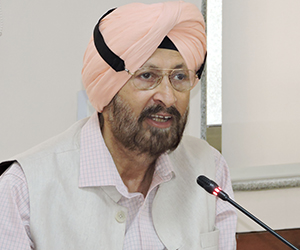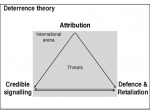On May 1, 2015, Defence Minister Manohar Parrikar, appointed a 10-member committee headed by former Home Secretary Dhirendra Singh, to review the defence procurement policies and procedures and to recommend fresh guidelines with a view to implementing Prime Minister Narendra Modi’s exhortation to ‘make in India’.
According to news reports, the committee has made several far reaching recommendations, including the nomination of selected Indian companies as strategic partners of the government to assume the role of ‘prime integrators’ of defence technology for complex projects at par with DPSUs and ordnance factories. The committee is also of the view that the indigenisation ratio of ‘Buy (Indian)’ acquisitions should be progressively increased with each revision in the Defence Procurement Procedure (DPP).
Transfer of Technology (ToT)
The aim of indigenisation of defence manufacture should be to make India a design, development, manufacture, export and servicing hub for weapons and defence equipment by 2025. The review being undertaken now must be utilised to learn from the experience gained in the implementation of the present Defence Procurement Procedure (DPP) that was first formulated in 2006 and is now in its sixth edition.
No country that is not substantially self-reliant in defence technology can aspire to become a dominant military power in its region and, in due course, on the world stage. India is hungry for state-of-the-art defence technology but has a low technology base. For over 50 years India had a buyer-seller, patron-client relationship with the USSR and then with Russia. MiG aircraft, tanks and other major weapons platform were manufactured under license, but there was no transfer of technology (ToT).
For that matter, no technology has been transferred by US companies despite US$ 10-12 billion worth of weapons acquisitions. However, purchases from the US were mostly government-to-government deals and ToT was not part of the contract. Defence technology is proprietary; the selling company’s government must be willing to allow the transfer and the buyer must be prepared to pay for it.
The essence of all efforts to achieve self-reliance lies in acquiring defence technology through original research or by gaining access to it through ToT. No country will give India strategic technologies, such as nuclear warhead and ballistic missile technologies, know-how on building nuclear-powered submarines and ballistic missile defence technology (BMD), among others. It is the responsibility of the DRDO to conduct original R&D into strategic technologies and this must continue.
For the development of hi-tech weapons platforms like fighter-bomber aircraft and sophisticated defence equipment like over-the-horizon (OTH) radars, there should be no need to reinvent the wheel. These should be developed jointly in conjunction with India’s strategic partners. The route adopted should be to form joint venture (JV) companies between Indian defence PSUs (DPSUs) and private sector companies and international defence MNCs. In these cases, the role of the DRDO and the Services HQ should be mainly supervisory and to act as facilitators.
The design and development of low-tech items should be outsourced completely to the private sector, with the DRDO monitoring progress of the projects. Services HQ should establish their own Design Bureaus to inculcate a technology development culture. They should initiate R&D projects in their training institutions, especially for the purpose of product improvement during the life-cycle of weapons systems and defence equipment. At present very little innovation is taking place within the Services, perhaps with the singular exception of the navy.
In fact, some R&D projects should be outsourced to universities and IITs to involve the institutions of higher learning in this important national endeavour. Also, DRDO should invite and put in place a system for the evaluation of project proposals from individual entrepreneurs.
In 11 years, the DRDO budget increased from Rs 3,443 to Rs 14,354 crore for FY 2015-16, that is six per cent of the defence budget. At present there are far too many DRDO laboratories. There is a need to rationalise the justification for these and close down those whose work can be outsourced to the private sector. The Rama Rao committee had gone into the functioning of the DRDO. Its recommendations must be expeditiously implemented after scrutiny by the Defence Technology Board headed by the Defence Minister. The inputs of the Services HQ must be taken into account.
Policy Issues
The starting point for the acquisition of new weapons systems and other defence equipment are General Staff Qualitative Requirements (GSQRs – army term). It is often alleged that the Services ask for the moon when they formulate GSQRs. The services, naturally, strive to acquire the best. As it is, the nation calls upon them to fight with weapons and equipment made by the lowest bidder. The MoD should ensure that representatives of the DRDO are made available to the Services teams assembled to formulate GSQRs. If there is still a disagreement between the desirable and the achievable, the DTB should act as the final arbiter. However, during the trials stage the Chiefs of Staff should be empowered to approve deviations from the GSQRs for single-Service acquisitions and the Chairman, CoSC, for tri-Service acquisitions.
At the policy level, many contentious issues remain to be resolved, including the privatisation of most of the ordnance factories and the defence PSUs. Publicly owned manufacturing facilities are always inefficient and seldom meet the laid down production targets. They also lack dynamism and normally develop a risk averse professional culture. Today it is well accepted that it is not the business of the government to be in business.
Though FDI in defence manufacture has been increased from 26 to 49 per cent, this is still not attractive enough for the MNCs to invest in India. Given the time and effort that goes into locating a joint venture partner and the risks involved, they prefer to have a controlling stake. This policy should be reviewed by the government, but adequate regulatory measures should be built in to guard against the pitfalls of permitting majority stake.
The present offsets policy has not worked to India’s advantage. The defence industry’s ability to absorb hi-tech offsets is still limited. Absorbing 50 or even 30 per cent offsets is extremely difficult at present. It may be more prudent to consider offsets only in cases where the benefits expected to accrue will outweigh the additional costs and Indian JV partners can absorb the technology that is brought in. While exports of defence equipment have been permitted, the procedures for according the approvals that are necessary and the regulatory framework need to be streamlined.
Streamlining Production
At present, the time frame for the acquisition of defence equipment is excessive. From the submission of a Statement of Case for a new acquisition to according approval in principle (Acceptance of Necessity – AON) takes six months to one year. Then the case goes into RFI (request for information) and RFP (request for proposals) stages and prolonged negotiations with the selected bidder. The actual conclusion of the contract takes up to three years. The inconclusive negotiations for the Rafale fighter aircraft are an example. The delivery of the contracted item begins two to three years later. Even according to the current DPP, this is excessive and must be cut down to less than one-third. The DPB should decide on a cut-off date for the conclusion of the acquisition contract and ensure accountability.
There is a need for pre-RfP consultations to avoid incidents of ‘no bid’. Trials on ‘no cost-no commitment’ (NCNC) basis, in which the prospective bidder has to bear the entire expense of transporting the equipment to the trials locations in India, providing crews and ammunition and organising logistics support for the crew, put off many bidders. Like elsewhere in the world, the MoD should bear the cost of trials.
Close supervision during manufacture would help to avoid time and cost overruns. As the Services are the main stakeholders, armed forces officers should be positioned in manufacturing facilities for supervision. At present, the services find quality control to be grossly unsatisfactory. The Directorate of Quality Assurance (DGQA), the organisation responsible, comes under the Defence Secretary. The DGQA must be transferred to HQ Integrated Defence Staff so that it is directly answerable to the Chairman, CoSC.
Concluding Observations
The government should examine the feasibility of establishing Defence Economic Zones (DEZs) to provide incentives for indigenous defence manufacture. There is an inescapable need to establish an Institute of Defence Acquisition under the CoSC. The US has a Defence Acquisition University where all officers nominated for posts dealing with defence procurement are trained. As an example it would be pertinent to mention that the ‘life cycle concept’ of evaluating defence equipment for acquisition was completely alien to the armed forces till very recently. In fact, an exchange programme should be instituted with defence acquisition universities and institutions in countries from which India acquires the bulk of its defence equipment.
Finally, the DPP document is too long and must be cut down to not more than 12 to 15 pages. There is an urgent need to cut red tape, improve time-lines for the conclusion of contracts, ensure better quality control, involve armed forces officers more effectively at every stage of the acquisition and introduce greater transparency in the acquisition process.
As the full report of the Dhirendra Singh committee is not yet available in the public domain, it is not clear whether the committee has undertaken a holistic review of the entire gamut of defence procurement, including the DPP, the production process, R&D, the offsets policy, timely conclusion of contracts, quality control and accountability. The committee’s recommendations must be widely debated before these are considered by the Defence Procurement. The procurement of defence equipment is an extremely important facet of preparedness for future conflict and must be streamlined to obtain maximum value from every Rupee spent on the acquisition of weapons and equipment.
The writer is Visiting Fellow, VIF, and former Director, Centre for Land Warfare Studies (CLAWS), New Delhi.
Published Date: 15th July 2015, Image Source: http://forum.blockland.us
(Disclaimer: The views and opinions expressed in this article are those of the author and do not necessarily reflect the official policy or position of the Vivekananda International Foundation)









Post new comment